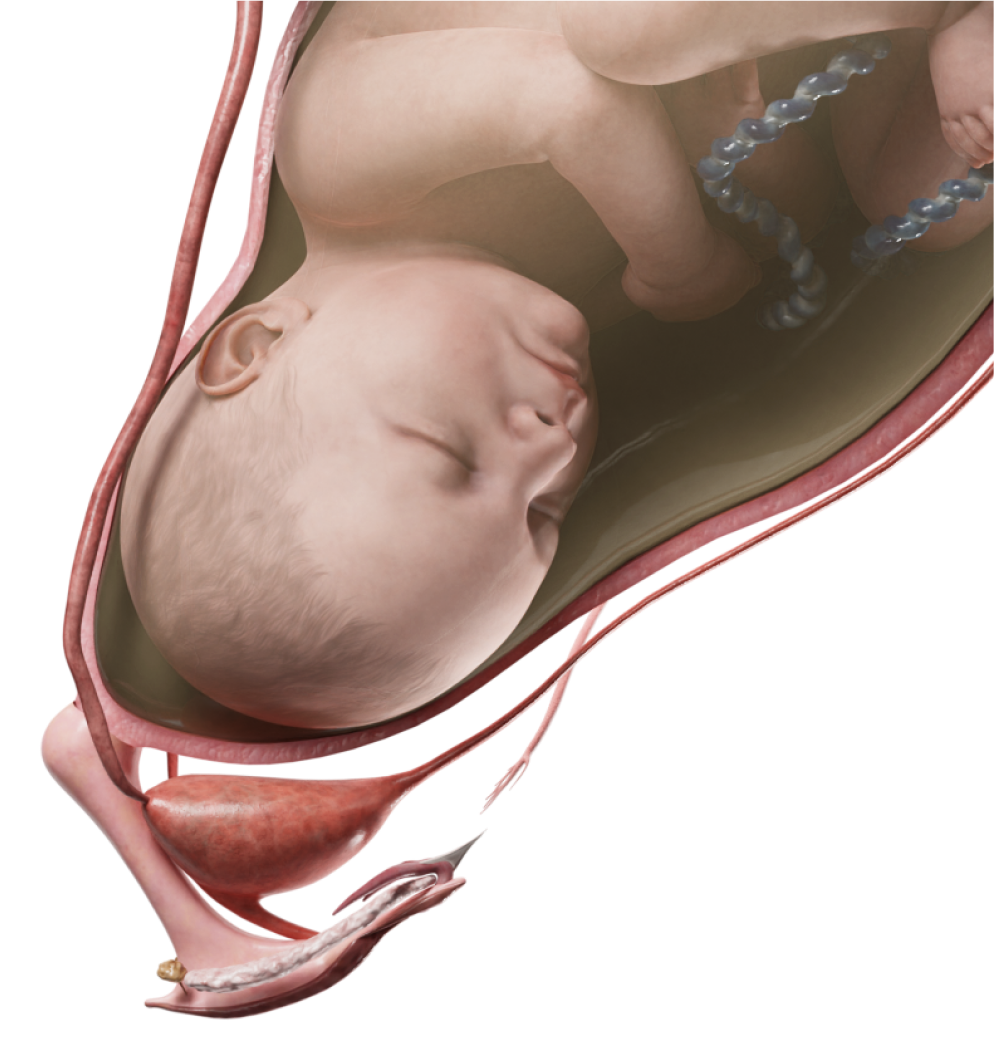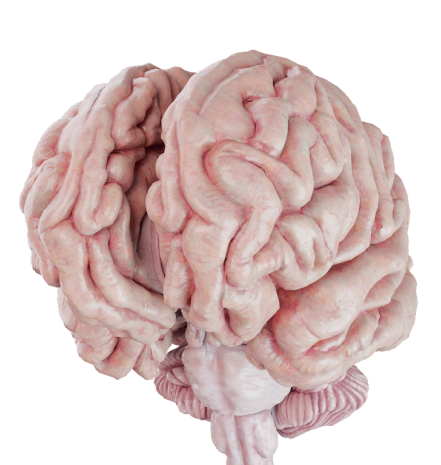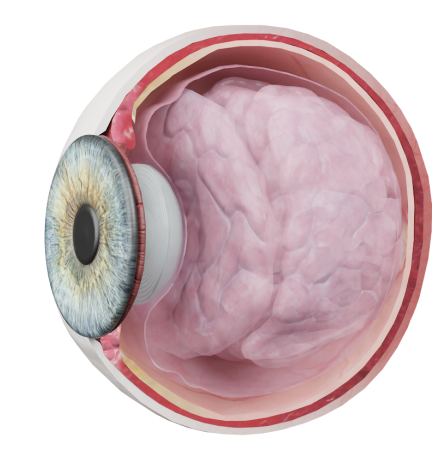Venous diseases
Varicose Veins of Lower Limbs
This condition is characterized by irregular dilation of the veins along their course provoked by the thinning of the vein wall.
Etiology
There is still no definite explanation why the condition develops. However, primary venous valvular insufficiency of the superficial veins in the lower limbs, family history, pregnancy, excess weight, static loads, and physical activity, sedentary lifestyle, etc., may contribute to the disease. In rare cases, it may also be a manifestation of congenital peripheral vascular malformations (also known as Klippel — Trenaunay — Weber syndrome).
Anatomic Pathology and Pathophysiology
When the venous walls become thinner, they may bulge unevenly along their course making blood drain from the deep veins into the superficial ones.
This leads to increased venous pressure resulting in vein expansion and tortuosity. Impaired venous outflow and permeability of the walls induce infiltration of blood cells, plasma proteins, and fluid into the subcutaneous tissue. Ultimately, microcirculation is disrupted and trophic disorders develop.
Classification
The 2004 CEAP classification provides a clear description of varicose veins in each patient, where each letter stands for a certain component: C — clinical manifestations, E — etiology, A — anatomic distribution, P — pathophysiology.
Our models showcase the most frequent and typical lesion locations:
- Varicose great saphenous vein;
- Varicose small saphenous vein.
Clinical Manifestations
According to the CEAP classification, there are 6 types of clinical manifestations:
С0: No visible or palpable signs of venous disease;
С1: Telangiectasias or reticular veins;
С2: Varicose veins;
C3: Lower limb edema;
С4: Changes in skin and subcutaneous tissue:
(a) pigmentation/eczema;
(b) lipodermatosclerosis/atrophie blanche;
С5: Healed venous ulcer;
С6: Active venous ulcer.
Besides aesthetics, patients may suffer from heavy-feeling legs, chronic fatigue, muscle cramps, a burning sensation, pain, trophic disorders, flaky skin, etc. Patients with varicose veins often develop thrombophlebitis.
Diagnosis
Doppler ultrasound helps determine the degree and extent of lesions, blood clots in the vein lumen, and the degree of circulatory impairment.
Treatment
Conservative treatment includes local and compression therapy, as well as phlebotonics. If a surgical intervention is required, a large number of methods are available: radiofrequency ablation for varicose veins, endovenous occlusion, laser coagulation, “gluing” of veins from the inside using adhesive compounds, or ligation and stripping of the damaged vein.
Thrombophlebitis
Thrombophlebitis is inflammation of the vein wall triggered by a blood clot in the vein lumen.
Etiology
Thrombophlebitis can develop due to a number of factors, such as inflammation, vascular trauma (including injuries inflicted by peripheral catheters), events that slow down blood flow (prolonged sitting, surgery, bed rest), the tendency toward blood clotting (for example, in case of thrombophilia or a malignancy).
Anatomic Pathology and Pathophysiology
Most often, thrombophlebitis affects the superficial veins of the lower limbs; the deep or iliac veins are less prone to the condition. When blood flow through the veins slows down, there is a higher risk of thrombosis.
Blood clotting in varicose veins usually occurs due to additional damage to venous walls, coagulopathy, or impaired antithrombotic properties of blood. This results in inflammation, and inflammatory cells infiltrate the vein’s wall. Blood clots may dissolve on their own or eventually lead to thromboembolic complications.
Classification
In our models you may find depictions of thrombophlebitis in two veins:
- The great saphenous vein;
- Basilic vein of the forearm.
Clinical Manifestations
Usually there are signs of inflammation in the affected area: edema, local hyperthermia, pain, and swelling. Some patients may experience moderate fever. Large blood clots can be palpated through the skin, and movements are painful. The most severe complication of thrombophlebitis is pulmonary embolism.
Diagnosis
Doppler ultrasound is used to determine blood clot size, location, mobility, and the degree of venous obstruction.
If no other causes are evident, hemostasis testing can help confirm or rule out certain thrombophlebitis etiologies.
Treatment
Conservative treatment includes local and compression therapy, phlebotonics, and blood thinners. In case of superficial venous thrombosis (SVT) of the lower limbs, surgical intervention implies ligation and/or removal of the affected vein.
Phlebothrombosis
Phlebothrombosis is a condition when a blood clot forms in a vein. It is not associated with venous inflammation (also referred to as phlebitis) and most commonly affects deep veins of the lower limbs.
Etiology
There are many factors (frequently a combination of them) that lead to phlebothrombosis:
- conditions that inhibit normal blood flow (prolonged surgery, bed rest, anatomic specificities of the vascular bed/adjacent organs and tissues, vein damage during surgery (e.g., hip joint surgery);
- increased risk of developing blood clots (antithrombin III and protein C or S deficiency, Factor V Leiden (FLV), malignancy, pregnancy, etc.).
Anatomic Pathology and Pathophysiology
Although blood clots continuously form and dissolve in our body at the microscopic level, the factors mentioned above — increased venous stasis, excessive activity of procoagulant factors, and endothelial damage — can provoke pathological blood clotting. This results in either partial or complete occlusion of the vessel leading to impaired venous blood outflow and high risk of thromboembolic complications.
Classification
This condition can be classified based on anatomical localization, or its clinical course (acute, subacute, chronic).
Clinical Manifestations
Many patients with phlebothrombosis (about 50 % according to some estimates) are asymptomatic.
If symptoms develop, the most wide-spread ones are pain and limb edema (ankle, leg, thigh edema depending on blood clot location), while skin reddening is less common. When the disease affects large veins, such as femoral or iliac, patients present with milk leg (phlegmasia alba dolens), and when it extends to the entire iliac vein system, patients develop cyanosis (phlegmasia cerulea dolens).
Pulmonary embolism is one of the most severe complications of phlebothrombosis. It manifests as a sudden feeling of breath shortness, chest pain, dyspnea, dizziness, cough, weakness, and arterial hypotension.
Diagnosis
Doppler ultrasound helps determine blood clot size, location, mobility, and the degree of venous obstruction.
Usually, hemostasis testing is performed. D-dimer, prothrombin time, thrombin time, APTT, fibrinogen, and activity of coagulation factors should be determined.
Phlebography can be helpful to examine free-floating blood clots and to clarify nonconclusive ultrasound results.
CT angiography is instrumental in detection of pulmonary embolism.
Treatment
Conservative methods include anticoagulant and antiaggregant therapy, as well as wearing compression stockings. If patients present with extensive damage involving proximal parts of deep veins and have a high risk of thromboembolic complications, thrombolysis is performed. Surgical techniques may include thrombectomy, vein ligation or plication, bypass surgery, and inferior vena cava filter.










